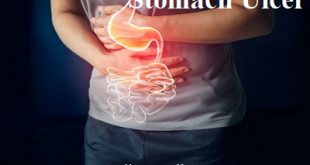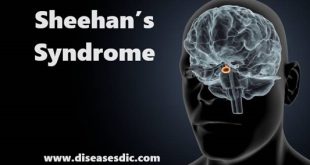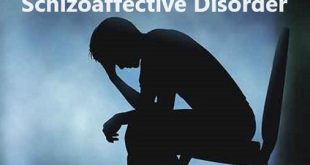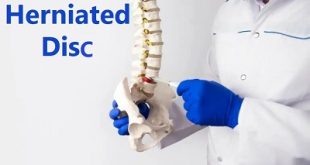What is Spinal Stenosis?
Spinal stenosis is a disorder that is caused by a narrowing of the spinal canal. This narrowing happens as a result of the degeneration of both the facet joints and the intervertebral discs. In this condition, bone spurs (also called osteophytes) grow into the spinal canal. The facet joints also enlarge as they become arthritic, which contributes to a decrease in the space available for the nerve roots. This condition is known as facet arthropathy.
The ligaments of the spinal column, especially the ligamentum flavum, become stiff, less flexible, and thicker with age, which also contributes to spinal stenosis. These processes narrow the spinal canal and may begin to impinge and put pressure on the nerve roots and spinal cord, creating the symptoms of spinal stenosis.
Stenosis may occur in the central spinal canal (central stenosis) where the spinal cord or cauda equina are located, in the tract where the nerve root exits the central canal (lateral recess stenosis), or in the lateral foramen (foraminal stenosis) where the individual nerve roots exit out to the body.
Some distortion of the spinal canal will occur in virtually every person as they age, but the severity of the symptoms will depend on the size of a person’s spinal canal and the encroachment on the nerves. The rate of deterioration varies greatly from person to person, and not everyone will feel weakness or pain.
Major types of Spinal Stenosis
In general, there are three main types of spinal stenosis:
Foraminal stenosis
Foraminal stenosis is the most common type of lumbar spinal stenosis, and may also be referred to as lateral spinal stenosis. As the nerve root is about to leave the canal through a side hole in the back of the spine, called the neuro-foramen, a bone spur (osteophyte) that has already developed from a degenerating disc, or an arthritic facet joint, can press on that nerve root.
With this type of stenosis, the emerging nerve root is trapped (for example, the L4 to S1 individual spine nerves that form the sciatic nerve). This type of spinal stenosis can easily be visualized as pinching of the nerves.
Central stenosis
Narrowing of the central canal (called central stenosis) in the lumbar (low back) area can compress the thecal sac. This narrowing can cause pressure on the nerve bundle at the end of the spinal cord (cauda equina), or the individual nerves within the thecal sac.
Far lateral stenosis
The individual nerves exit from the center of the spinal canal out hole in the back of the spine called the neuro-foramen. Beyond the neuro-foramen, there can also be narrowing secondary to the development of bone spurs from the facet joints, bulging discs, herniated discs, and ligamentum hypertrophy. This narrowing of the area lateral, or to the side of the neuro-foramen is called far lateral stenosis. There is often a combination of foraminal and far lateral stenosis.
Causes of Spinal Stenosis
The backbone (spine) runs from your neck to your lower back. The bones of your spine form a spinal canal, which protects your spinal cord (nerves).
Some people are born with a small spinal canal. But most spinal stenosis occurs when something happens to narrow the open space within the spine. Causes of spinal stenosis may include:
Overgrowth of bone. Wear and tear damage from osteoarthritis on your spinal bones can prompt the formation of bone spurs, which can grow into the spinal canal. Paget’s disease, a bone disease that usually affects adults, also can cause bone overgrowth in the spine.
Herniated disks. The soft cushions that act as shock absorbers between your vertebrae tend to dry out with age. Cracks in a disk’s exterior may allow some of the soft inner material to escape and press on the spinal cord or nerves.
Thickened ligaments. The tough cords that help hold the bones of your spine together can become stiff and thickened over time. These thickened ligaments can bulge into the spinal canal.
Tumors. Abnormal growths can form inside the spinal cord, within the membranes that cover the spinal cord or in the space between the spinal cord and vertebrae. These are uncommon and identifiable on spine imaging with an MRI or CT.
Spinal injuries. Car accidents and other trauma can cause dislocations or fractures of one or more vertebrae. Displaced bone from a spinal fracture may damage the contents of the spinal canal. Swelling of nearby tissue immediately after back surgery also can put pressure on the spinal cord or nerves.
What are the more common risk factors of spinal stenosis?
Many medical professionals relate spinal stenosis with aging, especially people in their 50’s. As we age, our bones undergo changes such as thickening ligaments, bone spurs, bulging or herniated discs, and compression fractures in the spine. All these are risk factors of spinal stenosis.
Other risk factors include:
Injuries – Falls where your back hits a hard surface that could fracture and damage your spine. Inflammation arising from that injury can narrow and tighten the spinal canal.
Tumors – Cancerous growths can occur and grow inside your spine, thus narrowing the spinal canal and increasing likelihood of stenosis.
Genetics – Those born with structural deformities in their spine also have the tendency of the spinal canal to narrow, and thus lead to spinal stenosis. Other spinal stenosis risk factors associated with genetics are inherited conditions like Paget’s disease.
Aside from age and genetics, another risk factor for spinal stenosis is a lifestyle.
Here are some lifestyle risk factors:
Obesity and improper nutrition – A diet without the necessary nutrients for proper bone growth and regeneration can lead to spinal stenosis. Being obese is also another risk factor as the additional weight subjects the spine and vertebrae to more stress and pressure.
Smoking and other vices – Smoking, alcoholism, along with other vices, make the body susceptible to all types of diseases and conditions due to its effects on the immune system and the degeneration of cells. That includes spinal and vertebrae degeneration which would then lead to spinal stenosis.
Lack of exercise – Our back and spine require exercise and conditioning, especially as we grow older. Without it, the bones and connective tissues easily break down and deteriorate. A weak spine makes it more prone to developing spinal stenosis.
Common Spinal Stenosis Symptoms
Overall, spinal stenosis symptoms are often characterized as:
- Developing slowly over time, or slow onset
- Coming and going, as opposed to continuous pain
- Occurring during certain activities (such as walking for lumbar stenosis, or biking while holding the head upright) and/or positions (such as standing upright for lumbar stenosis)
- Feeling relieved by rest (sitting or lying down) and/or any flexed forward position.
Complications of Spinal Stenosis
Complications resulting from untreated spinal stenosis can be severe so, although many people develop spinal stenosis and remain asymptomatic, it is important to be watchful for early signs of pinched nerves or even spinal cord compression.
Spotting early signs of stenosis can mean the difference between making subtle and painless postural adjustments and spending weeks or months recovering from back surgery.
How is spinal stenosis diagnosed?
A rheumatologist will ask about your symptoms and medical history. If he suspects spinal stenosis, he will do a physical exam. Some symptoms he will look for include:
- Numbness, weakness, cramping or pain in the legs, thighs or feet that makes it hard to walk
- Pain that goes down the leg
- Abnormal bowel/and or bladder function
- Loss of sexual function
- In severe cases, partial or complete leg paralysis. This is considered a medical emergency and you should get to an emergency room as quickly as possible.
A rheumatologist will also consider other conditions that can cause similar symptoms, such as arthritis of the hips or knees; disorders of the nervous system; or disorders of the heart and blood vessels. A rheumatologist may also order other tests to confirm the diagnosis and determine the seriousness of your condition. These include:
- An X-ray of the spine to check for osteoarthritis, bone spurs and narrowing of the spinal canal
- A computed tomography (CT) scan, which takes more detailed images of the back and spinal canal
- A magnetic resonance imaging (MRI) scan of the spine to take pictures of the spinal cord and nerves
- An EMG (electromyogram) to check the nerves going to your legs
- X-rays of the hips or knees, blood tests, as well as tests to check the circulation in your legs and to rule out other diseases with similar symptoms
What are the treatment options for spinal stenosis?
Medical Treatment
- Taking non-steroidal anti-inflammatory drugs (NSAIDs) for relief.
- Receiving cortisone injections directly into the spinal column to provide short-term relief.
- Engaging in exercise and physical therapy that focuses on strengthening the back and abdominal muscles as well as stretching.
If the above treatment options do not ease the pain and your ability to engage in everyday activities is inhibited, you should consider spine surgery.
Surgical Treatment
The goal of spinal stenosis surgery is to permanently decompress the spinal canal.
Types of spine surgery
Laminectomy: The most common type of surgery for this condition, laminectomy involves the removal of the lamina, a portion of the vertebra, to make room for the nerves. Some ligaments and bone spurs may also be removed. The surgery requires making an incision into the back.
Foraminotomy: The foramen is the area in the vertebrae where the nerve roots exit. The procedure involves expanding this area to provide more space for the nerve roots.
Spinal fusion: This procedure is done in cases of instability and involves joining the bones together with screws or bone grafts to provide spinal stability. It may be combined with laminectomy surgery. The surgery lasts several hours and can be done using one of two methods:
- Bone is removed from elsewhere in the body or obtained from a bone bank. This bone is used to create a bridge between vertebrae and stimulates the growth of new bone.
- Metal implants, such as rods, hooks, wires, or screws, are secured to the vertebrae to hold them together until new bone grows between them.
Other ways of coping with spinal stenosis?
Options other than surgery that may ease the pain of spinal stenosis include:
- Heat packs or ice
- Acupuncture
- Massage
ain can have a serious impact on your quality of life. Cognitive behavioral therapy may be able to help you manage your pain by providing education and coping mechanisms.
Spinal Stenosis Prevention
The most common cause of spinal stenosis in your neck or low back is aging. You obviously can’t prevent that, but spinal stenosis prevention is about practicing certain habits to improve and maintain your spine health. If you already have spinal stenosis, getting regular exercise and using proper body mechanics may help reduce the chances of your spinal stenosis from becoming worse.
Exercise
Exercise, when done properly, is a fantastic way to strengthen your spine and protect it from the everyday effects of wear and tear. It also helps keep your body weight under control. And that’s important because having a healthy weight puts less pressure on your spine.
If you’re new to exercise, start slowly. Gradually build up your sessions until you feel comfortable. A general exercise guideline to shoot for is around 30 minutes on most days.
Body Mechanics
Having good posture and practicing proper body mechanics are some of the best ways to prevent stenosis from progressing and to ensure the health of your back.
Good posture and body mechanics should be practiced all the time – whether you’re sitting, standing, lifting a heavy object, or even sleeping. Essentially, good body mechanics and posture are about keeping your spine in mind, even when you’re doing your regular activities.
Because aging is the primary cause of spinal stenosis, it’s hard to prevent. But that doesn’t mean you can’t be proactive about the health of your spine. Exercise and proper body mechanics may provide your back and neck a strong defense system against cervical or lumbar spinal stenosis that will serve you for years to come.
 Diseases Treatments Dictionary This is complete solution to read all diseases treatments Which covers Prevention, Causes, Symptoms, Medical Terms, Drugs, Prescription, Natural Remedies with cures and Treatments. Most of the common diseases were listed in names, split with categories.
Diseases Treatments Dictionary This is complete solution to read all diseases treatments Which covers Prevention, Causes, Symptoms, Medical Terms, Drugs, Prescription, Natural Remedies with cures and Treatments. Most of the common diseases were listed in names, split with categories.








Useful information clearly stated and helpful.
God bless you for the well illustrated information.
I would like to thank you sharing the important ideas and information with us. I had a car accident in 2015 from that time my back is giving me problem. This information is so helpful to me God bless you. Now i have more courage with my life. Im a truck driver i don’t have much time to rest.
i experiencing this kind.of pain.im still 40 yrs old.just start last month but i ignoring until lastweek i suffer i cant stand up properly and so much pain if i set one minute or longger and now my pee very stranges bec.become red color so i feel little worried if what is this now…hopeng u can help me.thnks n GODBLESD
please consult a doctor asap.
is there drug to ease the pain?
what is the different between lumbar stenosis and spondylosis
Spondylosis: Spondylosis is also known as the osteoarthritis of the spine. Spondylosis refers to the degeneration of the bones in the spinal region.
Spinal stenosis: There are spaces between the vertebrae, which have spinal nerves that connect to all other parts of the body. Spinal stenosis occurs when these spaces between the vertebrae become narrow. The narrowing of these spaces puts pressure on the spine and the nerves which, as a result, causes numbness, weakness, and pain in the neck, arms, and legs.
sir. iam final year engg college student .severeley affected by l4 l5 lumbar spandolisis ,unable to walk few min ,pain spreadung to left leg .lhave to study fir further 6 minths compulsory to complete course ,pl suggest any non surgical non steriod treatment for relief
thanks yogesh 9942170751
Please consult a doctor to get recovered from this problem.
I have bn diagnosed of lumbar and neck spondylosis since November 2011 and the pain keeps increasing with time. I read that there is invasive surgery that can help. Which country has the best experts for spine invasive surgery.
There is a list of countries that have well-equipped surgery facilities for minimally endoscopic surgery. The following are the best countries that can treat your diseases.
US, UK, Canada, India, and Korea.
I develop waist pain every one month interval, when i finished medications it go for one month, pls i need your medical advise, thank you.
Please consult a spinal surgeon.
what would you advise on issue of exercises while suffering from this…awaiting for fusion procedure. what exercises can i embark on?
Exercise Helps Fusion Heal
Excess bending, lifting, and twisting are still to be avoided in most cases, but graduated exercise, as tolerated, has major benefits. A controlled, progressive exercise program is typically started somewhere between 6 weeks and 3 months after surgery.
sir/m.iam very grateful. for what. I read. because i have such pin at my low back. i cannot stand very well and i times muscle hook. my. legs. pls. sir. i. need your. recommendation for the medicine. i will. be yousing. sir thanks,
Please consult a spine specialist for better prescription of drugs.
My wife 74 years old. She experiences severe sciatic problems.. Pain etc. What do you advise for curing this symptom.?
Please consult a doctor to get rid of this problem.
what does it mean when you are diagnose with degenerate disease of ” lumber spine”
Degenerative disc disease in the lumbar spine, or lower back, refers to a syndrome in which age-related wear and tear on a spinal disc causes low back pain. Intervertebral discs are tough, fibrous structures that act as ligaments between vertebrae, absorbing pressure and providing cushioning for the spinal column.
I have a lipoma,after an accident, and back pain. can I go for CT scan?.
Yes, we highly recommend you to consult a doctor to diagnose the type of tissue it is.
pls am having pains from my neck to my weast what Wil I do
We strongly advise you to contact a spine surgeon for the betterment of diagnosis.
i have a problems of back pain caused by ijection when miner operation done,tell me medicine or exercisethanks
kindly consult your doctor for the proper prescription of treatment and medications.
satisfied when reading the information.Needed to go for a check up right now.
I sick spin problem (Lawback ) and my mucils on my leg I am very suffer this time please if you have any easy ways help me. I am 60 years old.